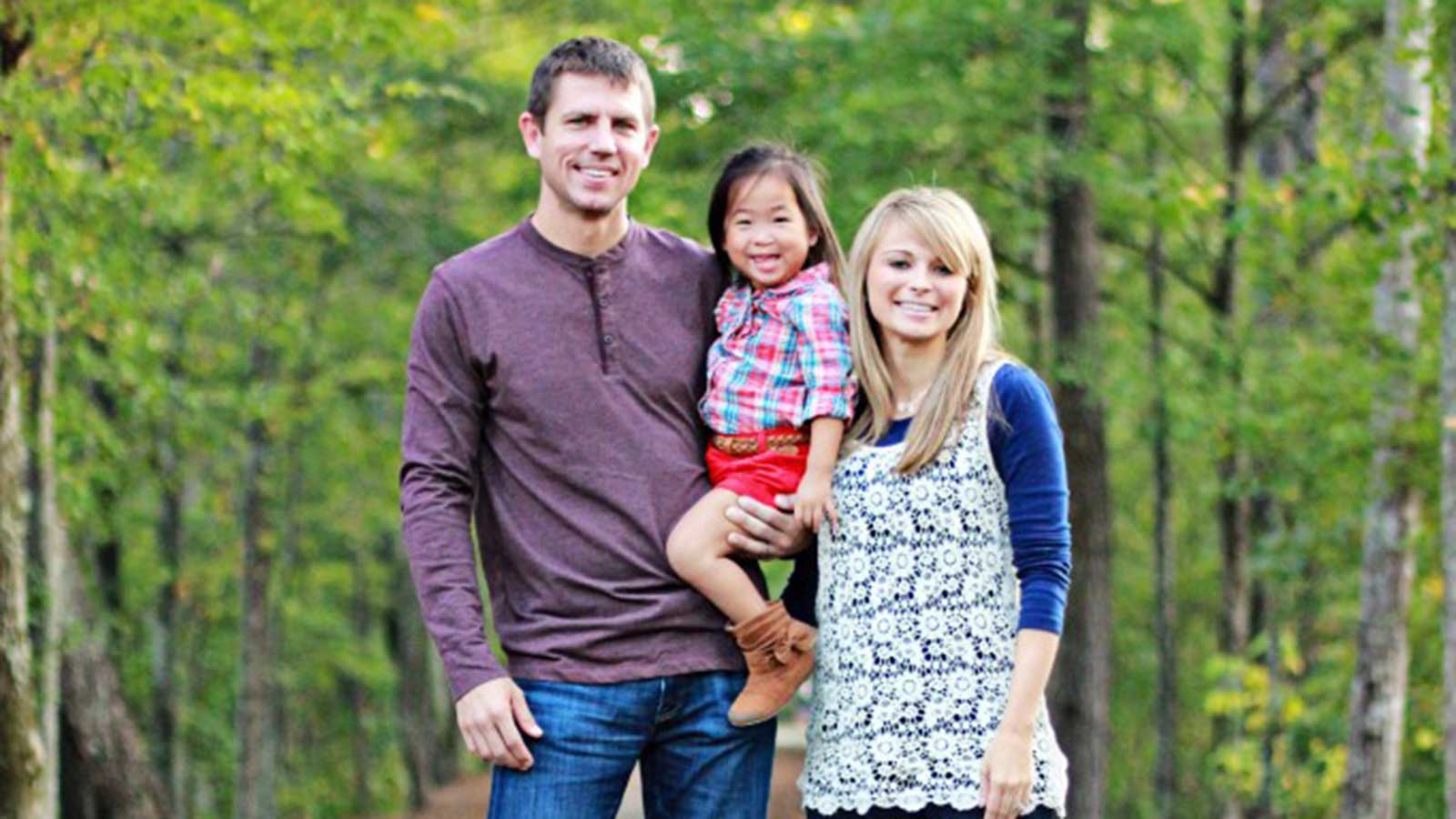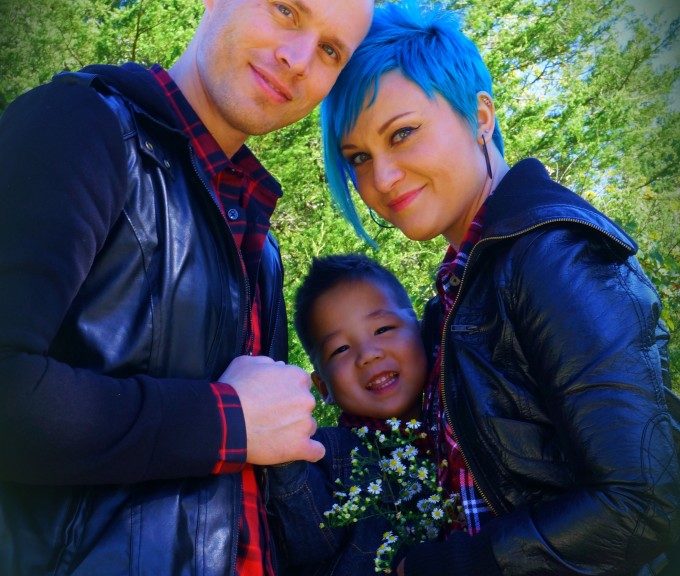
Disabilities &
Medical Conditions in Special Needs Adoption
Many children waiting for adoptive families have special needs, ranging from mild to significant.
Many children eligible for international adoption today have disabilities or medical conditions that require specialized care. While the prospect of parenting a child with special needs can seem intimidating, these conditions vary greatly — and are often less significant than an adoptive family may initially believe.
We encourage all prospective adoptive families to be open and honest throughout the adoption process, and learn more about the profile of child they are prepared to parent. Below, you will find important information about some of the more common disabilities and medical conditions among children waiting to be adopted. You’ll also find stories from experienced Holt families who are successfully caring for a child with one of these common conditions.
Index of Medical Conditions on This Page:
Cerebral Palsy
Cerebral palsy is a disorder that impairs body movement, muscle tone and coordination. It is caused by brain damage before or during birth, or in the first 3 to 5 years of life.
Problems arise because of abnormalities in parts of the brain that control muscle movements, not the muscles themselves. Cerebral palsy can affect the body in different ways (right or left side, arms or legs, or both), depending on the severity of the disease.
The brain damage that leads to cerebral palsy can also lead to other health issues, including mental delays, seizures, vision, hearing and speech problems, and learning disabilities. The condition does not worsen over time. There is no cure for cerebral palsy, but treatment, therapy and special equipment can greatly improve a child’s capabilities.
The earlier treatment begins, the better chance a child has of overcoming developmental disabilities and learning new ways to accomplish daily tasks.

“There have been some little [ways in which] we’ve had to adapt to her — such as her not walking as fast — and we pick her up for long distances. But really, it hasn’t been that much of a shift in our thinking… We certainly didn’t have any trouble falling in love with her.”
— Drew Horine, father of Devki, who has cerebral palsy
Cleft Lip & Cleft Palate
Cleft lip and palate are birth defects that affect the upper lip and the roof of the mouth.
A cleft lip may be a small split in the lip or a complete split in the lip that goes all the way to the base of the nose. The cleft can occur on one or both sides of the lip. A cleft palate causes an opening in the roof of the mouth, or palate. It can occur on one or both sides of the palate, and extend for its full length. Cleft lip and clef palate can occur together or separately.
Children with a cleft lip or palate often have problems with feeding and speaking clearly and can have ear infections. They might also have hearing problems and problems with their teeth. They will require surgery to correct the condition.
Surgery to repair a cleft lip usually occurs in the first few months of life and is recommended within the first 12 months. Surgery to repair a cleft palate is recommended within the first 18 months or earlier if possible. Many children will need additional surgical procedures as they get older.
Surgical repair can improve the look and appearance of a child’s face and might also improve breathing, hearing, and speech and language development. Children born with orofacial clefts might need other types of treatments and services, such as special dental or orthodontic care or speech therapy. With treatment and care, most children do well and lead a healthy life.

“[Hannah] is funny, smart, beautiful, bossy, and most importantly, ours. We love that when God knit her together, He knew that the very ‘disability’ that others would see would be what brought her together with her forever family.”
— Liz Barnette, mother of Hannah, who was born with a cleft lip and palate
Congenital Heart Disease
Congenital heart disease (CHD) is a problem that is present at birth and can affect the structure of a baby’s heart and the way it works. In some cases, the heart can become enlarged to make up for its limited function.
A baby may be born with just one or several heart defects, some of which may need little or no medical treatment even through adulthood. Others are more serious and can endanger the life of the child — either immediately to the newborn, or over time. Early diagnosis and treatment is critical to the lifelong health and well-being of a child born with a congenital heart defect.
Congestive heart failure (CHF) may be a result of CHD because the heart must work harder than usual. CHF is a serious condition in which the overworked heart does not pump blood efficiently. As the heart works harder, metabolism and energy requirements increase. At the same time, blood flow decreases, resulting in small stomach size and slow gut motility.
In addition, the heart’s inefficient pumping causes fluid to back up into the lungs, liver and other organs. Therefore, children with CHF often require fluid restriction and/or a diet low in salt. This makes it difficult to provide the child with adequate energy intake.

“Melia is now 10. She had three surgeries to strengthen her heart when she first arrived home, but has not seen the operating room since! She gets annual checkups with her cardiologist, but has not needed any further interventions or medications.”
— Katie and Ryan Horner, parents of Melia, who was born with congenital heart disease
Down Syndrome & General Low Tone
Down syndrome, also called Trisomy 21, is a condition in which extra genetic material causes delays in the way a child develops, both mentally and physically.
Medical problems may vary from child to child. While some children diagnosed with need a lot of medical attention, others lead lives where the disease has less of an impact on their daily functions.
Low muscle tone, or hypotonia, is common in kids with Down syndrome, but is less obvious as they get older. Children will reach developmental milestones, like sitting up, crawling, and walking, though typically later than other kids do. Low muscle tone may also contribute to sucking and feeding problems during early childhood, as well as gastroesophageal reflux and constipation.
Fortunately, the health problems associated with Down syndrome can be managed well, especially when detected early, and many resources are available to help children and their families.

“We strongly encourage other families to not shy away from special needs adoption! What you don’t know or understand, you will learn. What fears you have will be erased when you pray and seek the support of others, especially those who have made a similar journey.”
— Jade and David Presnell, parents of Micah, who has Down syndrome
Fetal Alcohol Spectrum Disorder
Fetal alcohol spectrum disorder (FASD) is an umbrella term to describe a broad range of physical, developmental and behavioral conditions that can occur in a child with prenatal exposure to alcohol.
Some children born with FASD may struggle with memory and attention span, communication and language comprehension, hyperactivity, impulsivity and other behaviors. Other children experience mild to no symptoms at all.
There is no cure for FASD, but many things can help children reach their full potential, especially if FASD is identified early.
Families who adopt a child with FASD have found great success by brainstorming ways to help their child and address their behaviors. It is also important for families to have access to FASD-competent therapeutic attention resources, as many children with FASD are misdiagnosed with ADD, ADHD and other disorders.

“FASD seems huge, and there are so many things to prepare for. But when we broke it down into those small aspects to prepare for, some didn’t seem big. But others did, and that’s what we focused on.”
— Cassie Brooks, mother of Emma, who had prenatal exposure to alcohol
Low Birth Weight
Low birth weight is defined as a birth weight of less than 5 pounds, 8 ounces. Some babies with low birth weight are healthy, even though they’re small. But having a low weight at birth can cause serious health problems for some children.
A baby who is very small at birth may have trouble eating, gaining weight and fighting off infections. Some may have long-term health problems as well.
One of the main causes of low birth weight is preterm birth, meaning the baby is born before 37 weeks of gestation, or pregnancy. Another cause is fetal growth restriction. This occurs when a baby doesn’t gain the weight they should before they are born.
Fetal growth restriction can be caused by many factors. For example, a mother may have an infection or chronic health condition, such as diabetes or a heart, lung or kidney problem. She may lack good nutrition and not gain enough weight during pregnancy. Or the mother may smoke, drink or use drugs while pregnant.
Children who are born at low birth weight should have regular checkups with their pediatrician. These medical visits can help your child’s doctor spot — and address — health conditions and developmental issues that may cause problems as your child gets older.

“[Desmond was] born prematurely at only two pounds and had already faced myriad health issues… [But] the wonderful thing about God’s destiny is that when we walk in His perfect plan for us, we are not limited by our feeble, human abilities. In our weakness, He is strong.”
— Mandie Hickenbottom-Conner, mother to Desmond, born with low birth weight
Thalassemia
Thalassemia is an inherited blood disorder caused when the body doesn’t produce enough of the hemoglobin protein, which enables red blood cells to carry oxygen.
Some babies show signs and symptoms of thalassemia at birth. Others develop them during the first two years of life.
Thalassemia can cause chronic fatigue, jaundice and anemia. As it progresses, iron in the blood fills the liver or spleen, eventually causing organ failure. Children with untreated thalassemia may be stunted or fail to thrive. Without medical care, their bellies swell and they may lose their teeth.
Thalassemia cannot be cured, but with treatment a child can anticipate a normal life expectancy. Regular blood transfusions and medication can help manage symptoms. In more severe cases, a stem cell transplant can eliminate the need for lifelong blood transfusions and drugs to control the buildup of iron in the bloodstream.

Check out additional parenting resources!
View our expanded list of recommended parenting websites, books and other resources organized by topic.

